New Century Asian Pear Tree
Description
Also called shinseiki asian pear
A beautiful and productive tree. This pear features a sweet flavor that makes it ideal for salads and snacks. Fruit is round, but sometimes lopsided, with a long stem. Thin, bright-yellow skin surrounds cream-colored, crisp, juicy flesh. Similar to grocery store Asian pears, but homegrown tastes better! Picks earlier than Chojuro variety. Tree is heat- and cold-tolerant. Originates from Japan in 1945. Ripens in late August. Best pollinators: Starking® Hardy Giant™ or Hosui. See more recommended pollinators below.
Survival Guaranteed!


Since 1816, Stark Bro’s has promised to provide customers with the very best fruit trees and plants. It’s just that simple. If your trees or plants do not survive, please let us know within one year of delivery. We will send you a free one-time replacement, with a nominal shipping fee of $9.99. If the item in question is not available, we can issue a one-time credit to your account equaling the original product purchase price or issue you a refund. Read more about our warranty policy.
Characteristics
| Bloom Color | White |
| Bloom Time | Early |
| Fruit Color | Yellow |
| Fruit Size | Medium - Large |
| Hardiness Zone Range | 4 - 9 |
| Pollination | Pollinator Required |
| Ripens/Harvest | Late August |
| Shade/Sun | Full Sun |
| Soil Composition | Loamy |
| Soil Moisture | Well Drained |
| Soil pH Level | 6.0 - 7.0 |
| Taste | Sweet |
| Texture | Fine Grained |
| Years to Bear | 4 - 6 |
Size & Spacing
Mature Size
| Standard | 18 - 20' tall x 12 - 13' wide |
| Semi-Dwarf | 12 - 15' tall x 9 - 11' wide |
| Dwarf | 8 - 10' tall x 6 - 7' wide |
Recommended Spacing
| Standard | 18 - 20' |
| Semi-Dwarf | 12 - 15' |
| Dwarf | 8 - 10' |
Zone Compatibility
Pollination
This variety requires another one for adequate pollination.
Tools & Supplies
Planting & Care
Learn all about how to grow pear trees in The Growing Guide. An entire section of our website dedicated to your growing success.
Shipping Information
Arrives when it's time to plant
Questions & Answers
This variety does not have any known resistance to fire blight. No variety is fully immune.
We appreciate you reaching out to us. Yes this is a 1.5-3 foot tree, shipped in a 4 inch pot.
If you have any further questions please don't hesitate to reach back out to us. Have a great day!
Asian pears need either another Asian pear or a Bartlett for pollination.
When shipped, they are about 3-4' tall and/or with a 3/8" or larger trunk diameter.
Most pears are different from other fruits, you need to pick them before they ripen while they’re still hard and yellow-green. Wait until they start to turn yellow and perhaps a few drop off the tree, then harvest. They should then part from the branch easily. Place in a room at 60-70°F to ripen. Check the pears frequently, as they can take anywhere from a few days to more than a week to ripen.
Note: Asian pears are best when ripened on the tree.
Harvest season begins August thru October depending on the variety and location
We appreciate you reaching out to us. This variety requires a pollinator partner in order to bear fruit.
If you have any further questions please don't hesitate to reach back out to us. Have a great day!
I'm so sorry about your Asian pears, that is so frustrating. It sounds like some of them (probably not all of them) have been invaded by codling moths. If you look closely, you can probably see a little hole where the caterpillar/worm got into the fruit. A neem oil regimen will take care of the moths in the future. By the way, you can just cut out the center and eat the rest of the pear. Here is a link to neem oil, which is organic: //www.starkbros.com/products/tools-and-supplies/pest-and-disease-controls/bonide-neem-oil
Unfortunately we cannot give you an accurate answer we recommend you to reach out to your local county extension office as they will have tailored information specific to your growing area.
We appreciate you reaching out to us. We use several different rootstocks, depending upon the desired result and what is available. For that reason, we're unable to guarantee a specific rootstock.
If you have any further questions please don't hesitate to reach back out to us. Have a great day!
Blackening leaves on your Asian pear tree could indicate several issues, including fire blight, fungal diseases like Entomosporium leaf spot or pear scab, or sooty mold, or even heat damage.

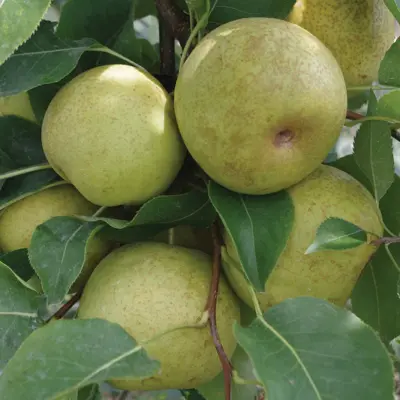
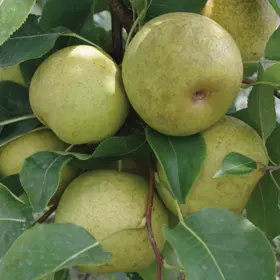
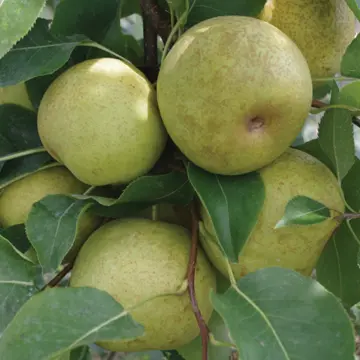
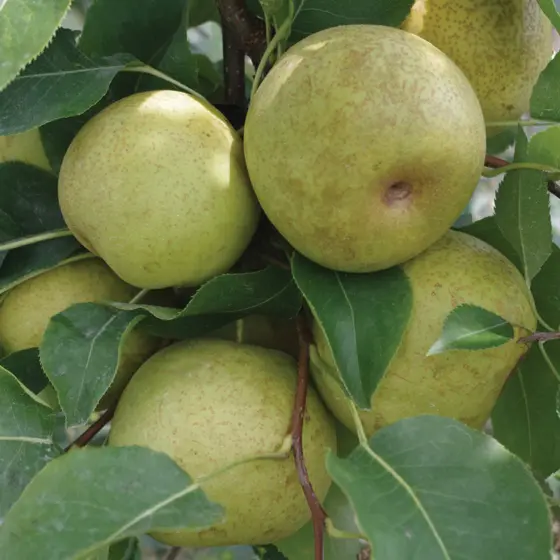
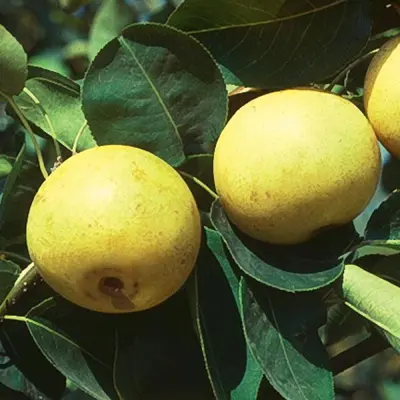
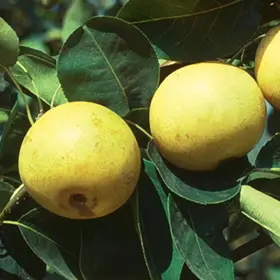
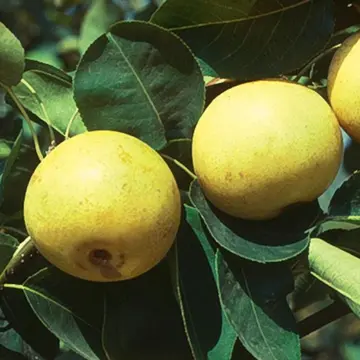
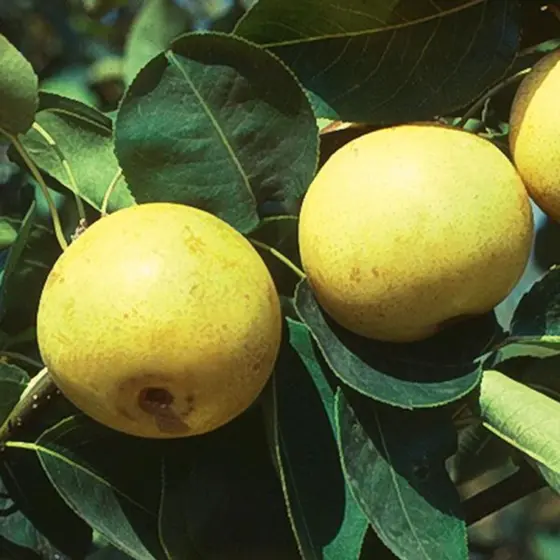
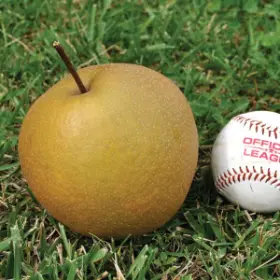
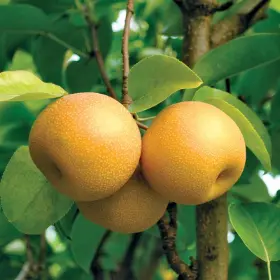
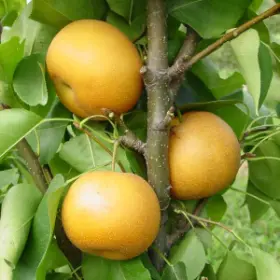
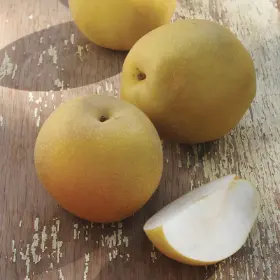

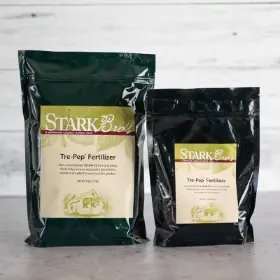
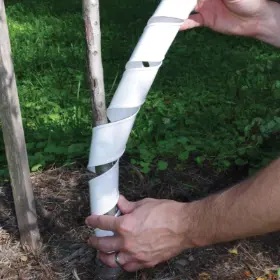
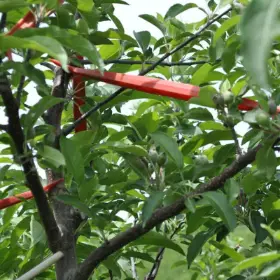
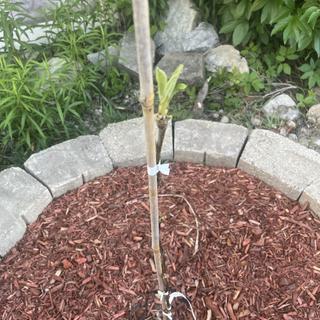

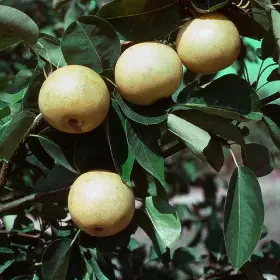
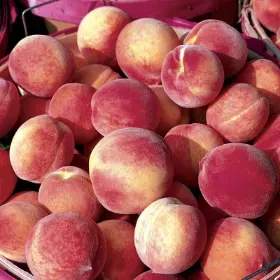

it will pollinate my pear that was given to me this year on Mother's Day.
Same as the other tree
Best suited for my climate
To pollinate my Asian Hosui Pear.